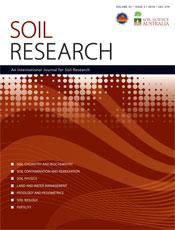SR15069Biochemical properties of highly mineralised and infertile soil modified by acacia and spinifex plants in northwest Queensland, Australia
The present study characterized biochemical properties root zones of two keystone native plant species (Acacia chisolmii, leguminous and Triodia pungens, spinifex) under subtropical and semi-arid climatic conditions. Results suggested the importance of native leguminous acacia in contributing N rich plant litter for nutrient cycling in infertile soil, altering microbial community by increasing fungal:bacterial ratio, microbial biomass and enzymatic activities, compared to spinifex. These provide the basis for engineering growth media to rehabilitate acacia-spinifex communities across mined landscapes.




